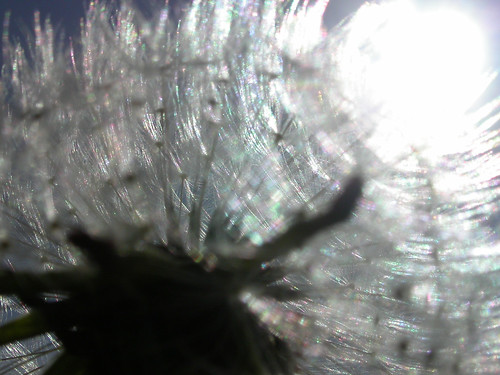
We stink! Advertising campaigns bombard us with the message that we smell; from feet to hair, from groin to armpit. According to them, Smell is Bad. Yet research has shown that the chemicals in sweat known as pheromones can create bodily responses in other humans. Apparently some of the constituents of sweat even help deter predators but I'm afraid I've lost the source of that claim.
As consumers we are told that both smelly sweat and excessive wetness from perspiring are anti-social. I tend to agree with the first point although regular washing with soap and water should cut down the worst iffy niffs unless there is some underlying problem. Some people find that drinking more water and eating less protein can also improve body odour, but most of us need an extra something to make sure we smell sweet and fresh.
Go into any supermarket and you're faced with an arsenal of chemical weapons. Deodorants to stop BO (whisper it), anti-perspirants to prevent wet armpits. The big brands feature magic ingredients that keep everything under control whilst you win the World Cup, take your daily 10 mile run, close that multi-million pound deal and flee from women baying for your fragrant body. But could these smell-busters be doing more harm than good?
The Good Guide is a useful online resource which lists the ingredients and likely toxicity of common products, including deos and anti-perspirants. A similar site is
Skin Deep. Further online meandering reveals numerous websites linking deo substances such as Triclosan, parabens and
aluminium salts with increased health risks, most notably
breast cancer. With all this evidence it seems sensible to choose a deodorant that doesn't contain chemicals and substances that may have a negative impact upon your health but is safe and effective.
There are lots of excellent products available in shops or by mail. We stock deodorants by Lavera and Weleda in our shop. Be aware though, most (if not all) 'crystal' deodorants DO contain aluminium despite some claims to the contrary. They're actually made from alum, also known as
alunite, which is a compound of aluminium. What these crystals don't contain is aluminium chlorohydrate which is the aluminium salt that may be linked to health problems due to its ability to break through the skin barrier. Apparently alunite/alum doesn't have this ability, but if you're wanting to err on the side of caution and avoid aluminium altogether then don't buy crystal deodorants or any product based on them.
I'm undecided about their health implications but I'm irritated when I see retailers or manufacturers claim that crystal deos are 'aluminium-free'. I've contacted a few about it and usually the companies are great and amend their copy, but I have had some truly horrible replies. One supplier (who shall remain nameless although I would
love to spill the beans) even threatened me with a multi-million dollar lawsuit for illegal harassment. One of their retailers had refused to alter their website and I had said I would report them to Trading Standards (the UK department who deal with inaccurate product claims). After the threatening email I followed through; Trading Standards duly carried out a product purchase, tested the product and ordered the retailer to remove the claim. Result.
Anyway, dragging myself down from one of my favourite hobby horses (I sound like a zealot!), I thought you might be interested to hear how quick, easy and cheap it is to make an effective deo at home from store cupboard ingredients. That's what I do myself. Actually, it's a bit of an exaggeration to say 'make a deodorant' as pretty much all you're doing is getting a pot from the kitchen cupboard and dusting it on. And the magic ingredient? That multi-tasker, bicarbonate of soda - also known as baking soda (NOT washing soda; far too harsh). If you ever do baking I'd be willing to bet that you have an old pot of bicarb lurking in your cupboard that is well past its sell-by date. Baking soda does deteriorate over time which reduces its effectiveness as a raising agent, however it's still fine as a deodorant. I often use baking powder which contains bicarb along with some other ingredients (wheat flour and disodium biphosphate on my tub) but all perfectly benign.
Use the bicarb just like talc, dusting it under arms and onto feet. I'd avoid using it on intimate areas though. If you want a bit of fragrance you can add a few drops of essential oil - pick ones with deodorising properties if you want to boost effectiveness - shaking the pot daily for a few days to disperse the scent. Personally I like herbal fragrances so use thyme, rosemary and lavender.
Bicarbonate of soda is extremely versatile and I plan to blog about it again in due course, but in the meantime here's a useful
link to some household uses.







 We live only about 25 mls from Manchester (this is Manchester in the UK by the way) and are account holders at The Co-operative Bank, but I'd never heard about this until now. Of course some of you are now casually studying your fingernails and saying 'Oh yes, that's old news' but I was genuinely surprised. I must have been asleep in 2007.
We live only about 25 mls from Manchester (this is Manchester in the UK by the way) and are account holders at The Co-operative Bank, but I'd never heard about this until now. Of course some of you are now casually studying your fingernails and saying 'Oh yes, that's old news' but I was genuinely surprised. I must have been asleep in 2007.




